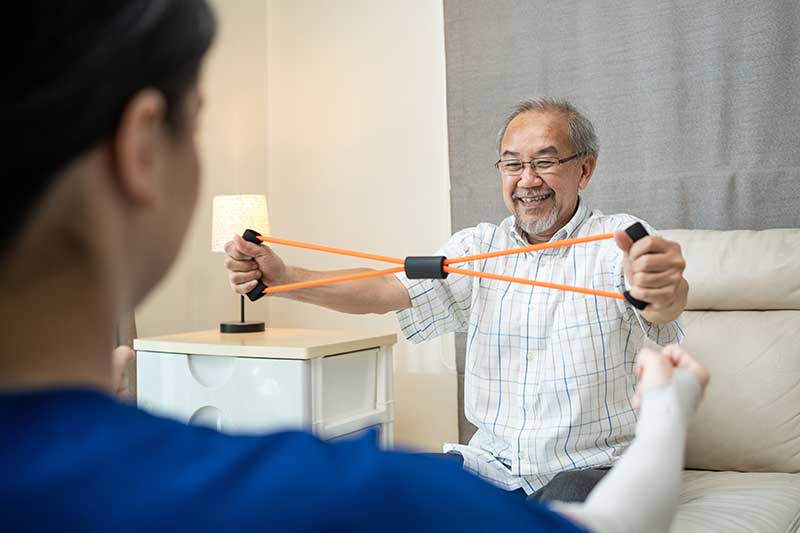Tailored Physical Therapy for Seniors’ Post-Surgery Recovery
Recovering from surgery can be difficult for seniors, especially after major procedures such as hip or knee replacements. Physical therapy is essential for a successful recovery since it helps elders regain strength, mobility, and independence. This article delves into particular physical therapy procedures intended to aid in the recovery process for seniors after frequent surgeries.
Importance of Customized Physical Therapy
Each senior’s recovery journey is unique, depending on their health, type of operation, and level of fitness. As a result, physical therapy programs must be adjusted to match the specific needs of each senior. Customized programs not only address specific recovery objectives, but also account for the unique medical and physical problems that elders confront.
Key Aspects of Physical Therapy Following Surgery
- Early Mobility: Beginning physical therapy shortly after surgery can considerably improve the recovery process. Even basic exercises like sitting, standing, or walking short distances might improve circulation and reduce difficulties.
- Strength Training: Targeted workouts help to rebuild muscular strength and support around the operation site, which is critical for restoring function. It is especially crucial to strengthen the legs, hips, and core before having hip or knee surgery.
- Flexibility Exercises: Flexibility is frequently impaired following surgery. Physical therapists teach elders safe stretching techniques to increase range of motion and relieve stiffness.
- Pain Management: Physical therapy approaches include exercises, heat and cold treatments, and other modalities that assist lessen the need for pain medications.
- Balance Training: Improving balance is an important aspect of physical therapy, particularly following lower-body surgery. This helps to avoid falls and other injuries throughout the healing period.
Techniques and Modalities Used in physical therapy
Physical therapists use a variety of strategies to promote recovery:
- Massage, manipulation, and mobilization are all examples of manual therapy techniques used to improve joint function and relieve pain.
- Therapeutic Exercises: Customized exercises designed to improve certain functional capacities.
- Gait Training: Teaching seniors how to walk properly, with or without assistive equipment.
- Use of Assistive Devices: Instruction on how to use canes, walkers, and crutches safely.
The Impact of Technology in Physical Therapy
Technological advancements have also found their way into physical therapy procedures, offering new approaches for boosting recuperation.
- Virtual Reality (VR): VR may imitate walking scenarios, balance exercises, and other physical activities in a controlled setting.
- Telehealth: Remote sessions allow seniors to continue receiving care even when they are unable to visit physical therapy clinics.
Success Stories
Seniors’ success stories in regaining mobility and independence through individualized physical therapy programs can be great motivators. These examples demonstrate the possibility of full recovery with the proper advice and commitment.
Physical therapy is essential for elders recuperating from surgery. Tailored programs that address unique needs and problems can significantly improve outcomes, allowing elders to regain their independence and resume normal activities. Physical therapists play an important role in the health and recovery of older persons after surgery by combining individualized exercises, cutting-edge technologies, and specialized procedures.




